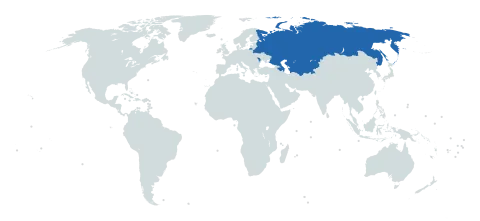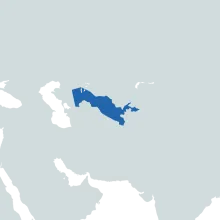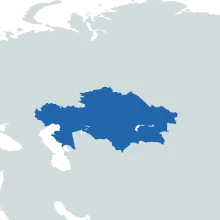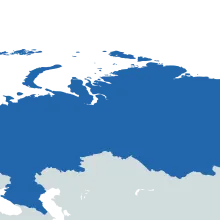The Commonwealth of Independent States (CIS) ITU region includes a number of countries across Europe and Central Asia that were formerly part of the Soviet Union. This includes nations like Russia, Azerbaijan, and Kazakhstan. With vast landscapes ranging from the Siberian tundras to the Caspian Sea's shores, the CIS region is a mix of emerging markets with rich natural resources. Telecommunications in this region has seen consistent growth, with a focus on expanding infrastructure and enhancing digital connectivity.

4G Coverage & Internet Use (% of Population)
Top Ten 4G Bands
Countries
The are 10 countries in this region.

Uzbekistan, located in Central Asia, is the most populous country in the region with a population of around 35 million. The population distribution is uneven with the majority concentrated in the fertile Fergana Valley in the eastern part of the country, while the western part, the Kyzylkum Desert, is sparsely populated. The capital city, Tashkent, is a hub for technology and telecommunications ...

Azerbaijan, located between Eastern Europe and Western Asia, presents unique challenges in its technology landscape. The terrain ranges from the flat, arid Kur-Araz Lowland to the towering, rugged peaks of the Greater Caucasus mountains. These geographical disparities, coupled with uneven population distribution, add complexity to telecommunications infrastructure. Most of the population is ...

Belarus boasts a robust technology landscape, with its telecommunications infrastructure showing significant advancement over the past decades. One unique challenge Belarus faces is its largely uniform topography and distribution of population, creating an equal demand for telecommunications across the country. To address this, Belarus has developed an extensive broadband network, covering both ...

Georgia, located at the crossroads of Western Asia and Eastern Europe, has a diverse geographical landscape ranging from coastal lowlands to high mountain regions, which presents unique opportunities and challenges for the deployment of technologies and telecommunications. The population of 3.7 million is unevenly distributed, with a high concentration in urban centres such as Tbilisi. As for ...

Kazakhstan, located in Central Asia, is the ninth-largest country in the world, with vast areas of sparsely populated land. Its population of around 19 million is concentrated in urban areas like Astana, the capital, and Almaty, the largest city. Kazakhstan's geographical expanse presents both opportunities and challenges for the technology and telecommunications sectors. Its significant mineral ...

Kyrgyzstan, a landlocked nation in Central Asia, is predominantly mountainous, presenting unique challenges for technology and telecommunications infrastructure. Its population of approximately 7 million is unevenly distributed, with about 1 million residing in the capital, Bishkek, and the majority scattered in rural areas. The country's geography necessitates innovative infrastructure solutions ...

Moldova, located between Romania and Ukraine in Eastern Europe, is a landlocked country with a population of around 2.6 million. Most of its population is concentrated in urban areas, with the capital city Chisinau housing a third of the total. Moldova has a developing telecommunications sector, with the fixed-line telephony system largely out of date and the mobile sector showing continuous ...

Russia, covering over 17 million square kilometres, is the world's largest country by land area, spanning eleven time zones and diverse geographical features from tundra to subtropical beaches. Its vast territory poses unique challenges for telecommunications and technology development, with its population of 143 million unevenly distributed, largely clustered in the western regions. The Siberian ...

Tajikistan, located in Central Asia, is a landlocked nation characterised by mountainous terrain, covering about 93% of its geography, which results in a challenging environment for the deployment of technology and telecommunications infrastructure. The population of around 9.7 million is unevenly distributed, with a high concentration in the fertile lowlands of the west and significant population ...

Turkmenistan, a Central Asian nation, has a population of approximately 6.3 million, most of whom are concentrated in the south-eastern part of the country, near the Amu Darya River and the Iranian border. This geographical peculiarity, coupled with vast expanses of desert terrain and low population density in the remaining regions, poses a unique challenge for infrastructure development. The ...